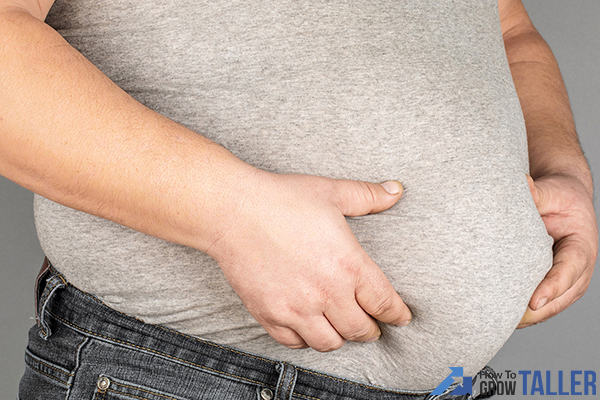You ever scroll through an old photo and think, “Wow, we were just kids, but some of us looked way older than others?” Yeah—me too. That weird mismatch of size, height, and age always made me wonder what was going on behind the scenes. And lately, I’ve found myself thinking more seriously about it, especially as rates of childhood obesity keep climbing. Not just because of the health risks we all know about—like diabetes or heart strain—but something more subtle, more invisible: how excess weight might be messing with a child’s growth.
Now, I’m not just talking about being “shorter” or “taller.” I mean real disruptions—changes in growth velocity, early puberty, hormonal imbalances, even how bones mature too quickly (which, yeah, I didn’t realize was a thing until I dug in). It turns out, obesity doesn’t just sit on the surface—it messes with the endocrine system, affects leptin levels, and can actually limit a kid’s height potential over time. Wild, right?
So if you’re a parent, a teacher, or just someone like me who’s trying to understand what’s going on in those growth charts and BMI percentiles, there’s a lot to unpack. Let’s break it down—because when it comes to obesity and height, it’s not as simple as “big kids grow taller.” Not even close.
You’d think spotting obesity in kids would be straightforward—”just look at the scale,” right? Not quite. I used to think that too, until I started looking deeper into how pediatric obesity is actually defined. And the truth is, it’s way more nuanced than just a number on the bathroom scale.
Childhood obesity is diagnosed using age-specific and sex-specific metrics, because kids grow at wildly different rates. The Centers for Disease Control and Prevention (CDC) and World Health Organization (WHO) use BMI-for-age percentiles—not adult BMI cutoffs—to classify kids as overweight or obese.
Here’s a breakdown of how it’s typically assessed:
But what I’ve found is that BMI alone doesn’t tell the whole story. That’s where things like waist-to-height ratio and fat distribution come in—especially when you want to understand adiposity, not just weight.
And personally? I look at growth percentile curves in context—if a kid suddenly jumps two major percentiles in weight without a matching change in height, that’s a flag. I’ve seen that pattern too many times to ignore.
Obesity in children isn’t about appearance—it’s about how that excess fat impacts growth, hormones, and long-term health. Once I started seeing it through that lens, everything shifted.

Here’s the thing—fat doesn’t just sit there. I used to think it was mostly about calories in, calories out, but it turns out body fat is hormonally active, and honestly, the ripple effects on a child’s growth are pretty wild once you dig in.
When a child carries excess fat, especially for a prolonged period, their endocrine system starts getting mixed signals. The body isn’t just storing energy—it’s also rewriting the rules for growth and development. What I’ve seen (and what the research backs up) is that obesity throws off key hormonal processes that drive puberty, growth, and height potential.
Some of the big hormonal disruptions that jump out:
What I’ve learned is that early puberty doesn’t mean better development—it often means growth stops sooner. Kids may shoot up fast, then plateau early. It’s a hormonal trade-off that most parents don’t see coming.
Honestly, the body’s hormonal response to fat is one of the most under-discussed parts of childhood obesity—and in my experience, understanding that is the first step toward managing growth in a healthier way.

I remember the first time I saw this in a pediatric growth chart—it was a 9-year-old girl already showing signs of puberty, shooting up faster than her classmates. At first, it looked like an early growth advantage. But by the time she hit 12, her height curve had already started to flatten. That’s when it really clicked for me: early puberty can actually limit final adult height, not enhance it.
Here’s what’s going on beneath the surface:
What I’ve found is that early menarche in girls, or rapid testicular enlargement in boys, often correlates with a shorter-than-expected final height—especially when it’s tied to excess body fat.
And honestly? That’s not something most parents (or even some providers) are warned about early enough. It’s not just about growing “fast”—it’s about whether that speed robs them of their full height potential in the long run.
You ever hear the phrase “overfed but undernourished?” That one hit me hard the first time I saw it in a pediatric nutrition journal, and honestly, I haven’t stopped thinking about it since. Because here’s the paradox: a child can be in a calorie surplus—sometimes way over—but still be undernourished where it counts most for growth.
What I’ve found working with families is that diets heavy in processed foods often leave kids full, but not fueled. And when it comes to height and skeletal development, micronutrients matter more than macros.
Some of the most common deficiencies I see in overweight kids:
What’s tricky is that excess body fat can actually impair nutrient absorption and bioavailability, so even when the right foods are there, the body might not use them efficiently.
In my experience, it’s not just about cutting calories—it’s about upgrading what’s on the plate. Because real growth needs more than just energy. It needs support, and that starts with minerals, not muffins.
You know what surprised me the most when I started digging into child growth patterns? It wasn’t hormones or diet. It was the indirect stuff—the things we don’t always link to height. Things like stress, sleep, screen time. I mean, we know these affect behavior, but growth? That connection isn’t talked about nearly enough.
In my experience, some of the biggest (and most overlooked) growth disruptors show up outside the clinic:
What I’ve learned? Supporting healthy growth isn’t just about nutrition or endocrinology—it’s about daily rhythms, emotional health, and habits that often fly under the radar.
Here’s a question I get a lot from concerned parents—“If my child loses weight, can they still grow tall?” And honestly, I wish the answer were a clean yes. But like most things with the human body, it depends. Timing is everything.
In my experience, intervening early gives the best shot at restoring growth potential. Once the growth plates fuse, there’s no undo button. But if you catch the window before that point—especially in pre-puberty or early puberty—there’s room for recovery. I’ve seen kids who were falling off their height curves rebound when the right support was in place.
A few insights I’ve learned the hard way:
So yes, height suppression from obesity can be mitigated, but the earlier you act, the more likely the body responds. Think of it less like flipping a switch and more like slowly reopening a door that was starting to close.
Related post: